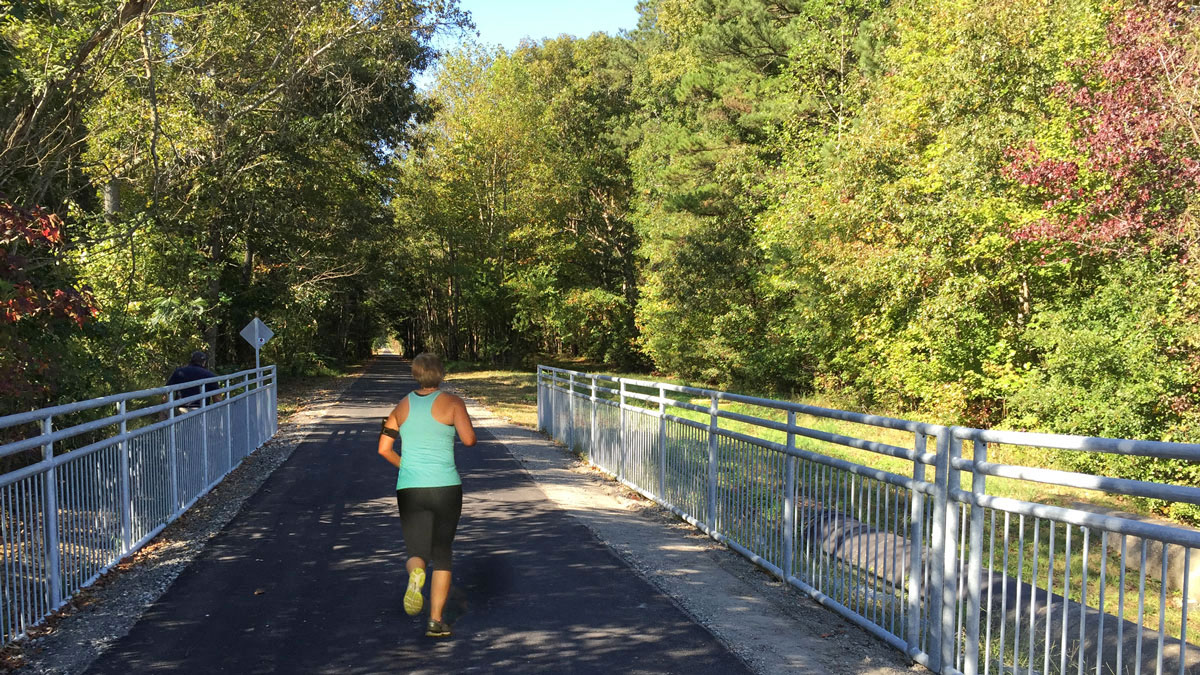The Seaboard Coastline Trail Reflects Long-Term Commitment to Improving Region’s Quality of Life
 As cities seek to revitalize their urban cores, reimagine public amenities, and help neighborhoods feel more connected, trail systems are popular solutions. These appealing, multi-modal paths correlate with goals for public health by promoting physical activity while strengthening residents’ sense of place. Developing these trail systems, however, presents its own set of challenges to overcome – but the opportunities for improving quality of life are significant.
As cities seek to revitalize their urban cores, reimagine public amenities, and help neighborhoods feel more connected, trail systems are popular solutions. These appealing, multi-modal paths correlate with goals for public health by promoting physical activity while strengthening residents’ sense of place. Developing these trail systems, however, presents its own set of challenges to overcome – but the opportunities for improving quality of life are significant.
w
A Path for the Future
In 2006, the City of Suffolk began the process to revitalize the abandoned Seaboard Coastline Rail corridor as a multi-modal trail with a Master Plan, supporting goals for a happier, healthier, more connected community. Ultimately, the envisioned 11-mile multi-modal trail from downtown Suffolk to the northeast Chesapeake City Line is the westernmost part of a collaborative effort between multiple Hampton Roads cities, including Chesapeake, Portsmouth, Norfolk, and Virginia Beach, as part of the Hampton Roads Regional Trail System.
The driving forces behind the trail’s design are rooted in public health and environmental sustainability. The Seaboard Coastline Trail created a very popular public amenity for family-friendly, recreational activity.
The Master Plan (completed by VHB and LPDA) divided the Seaboard Coastline Rail corridor into four distinct segments: Segment I, 1.5 miles from downtown Suffolk to Suburban Avenue, Segment II, 1.5 miles from Suburban Avenue to Nansemond Parkway, Segment III, 4.7 miles from Nansemond Parkway to Driver, and Segment IV, 3.3 miles from Driver to the Chesapeake City Line. This approach allows the total trail to be designed, funded, and built in separate phases and helps build public support over time.
Tackling Roadblocks
Municipal trail projects commonly incur challenges due to the meticulous details of funding, available right of way, and overall project timelines. Partnering with the City of Suffolk in 2012, Clark Nexsen’s transportation and environmental teams were first tasked with designing Segment IV of the trail, the initial 3.3 mile stretch to be brought from concept into reality.
The driving forces behind the trail’s design are rooted in public health and environmental sustainability. By crafting a design that retained existing grade elevations where feasible, preserved existing drainage, and repurposed the existing bridge, our team minimized impacts on natural vegetation and environmentally sensitive areas. Segment IV was completed in 2016 and has been a very popular public amenity for family-friendly, recreational activity.
Building off the momentum from the completion of Segment IV, the team is working closely with the City of Suffolk to design the remaining trail segments. Additionally, the team’s efforts secured more than $4 million in SMART SCALE funding for the construction of Segment I and we continue to partner with the City to explore funding opportunities for the remaining trail segments.
Thinking Outside of the Lines
When we think transportation, surely the more obvious examples come to mind: roads, traffic signals, bridges, highways, overpasses, etc. However, transportation encompasses far more than meets the road – and alternatively, more environmentally friendly modes of active transportation such as walking, biking, and skateboarding are growing in popularity.
Clark Nexsen has established an Active Transportation Group, an internal technical committee that focuses specifically on developing the engineered spaces to accommodate these alternative methods. Active transportation systems like the Seaboard Coastline Trail have the capacity to impact communities in a real way, making wellness more accessible and providing healthier, sustainable options to people.
Whether it’s a highway, a bike path, or a multi-use trail like the Seaboard Coastline, our team consistently strives to serve communities through transportation. By addressing economics, sustainability, and health and wellness, we help revitalize the past and design for the future.
For more information about this project, pursuing grant funding, or our other active transportation projects, contact Dave Bradshaw, PE at dbradshaw@clarknexsen.com or call 757.455.5800.
Award
2022 APWA Mid-Atlantic Honorable Mention
Photograph above of a runner using the Seaboard Coastline Trail in Suffolk, VA
